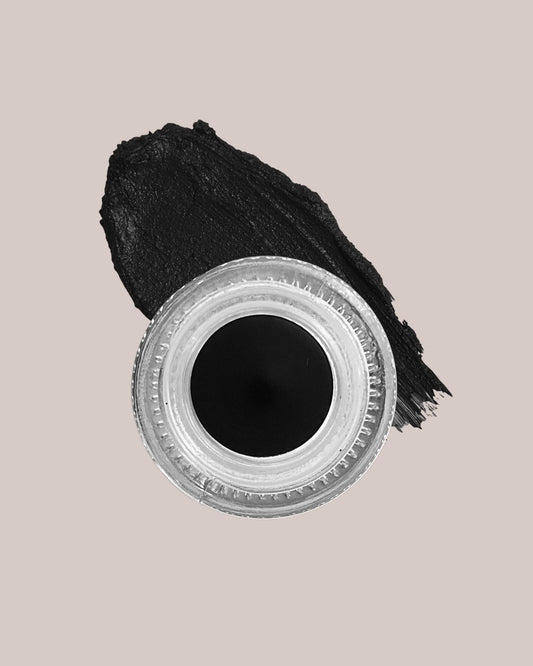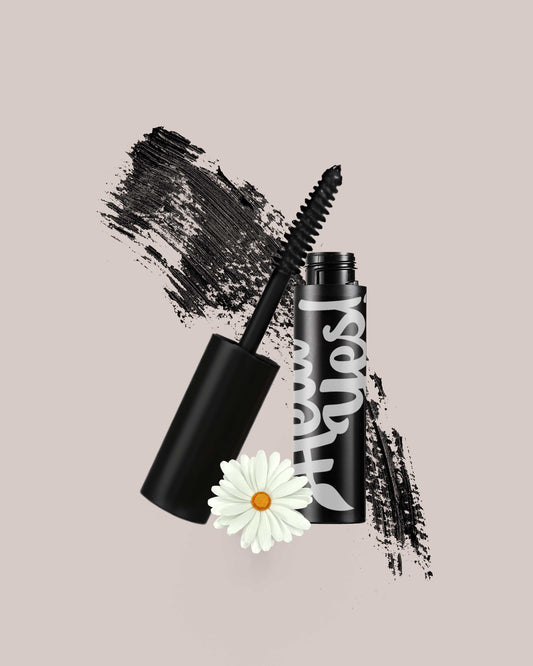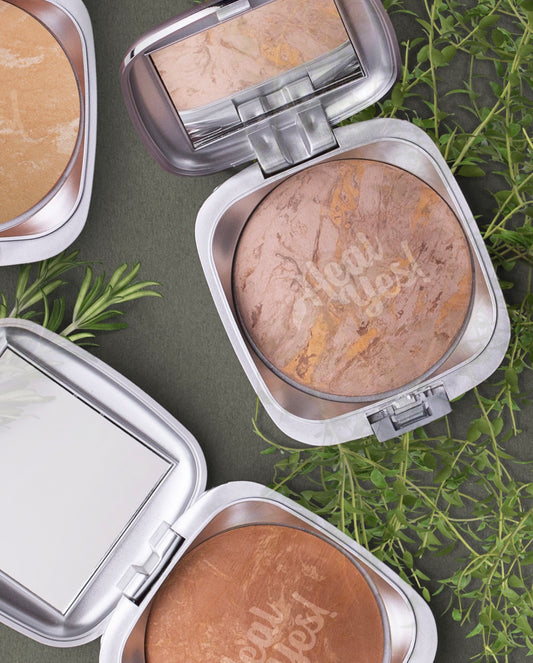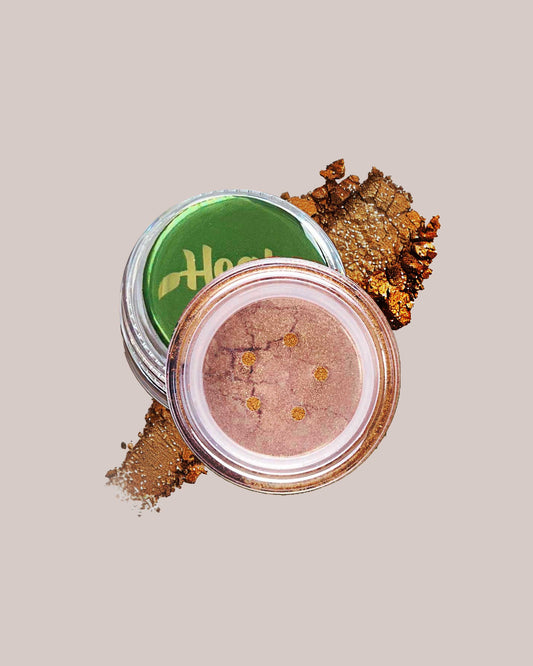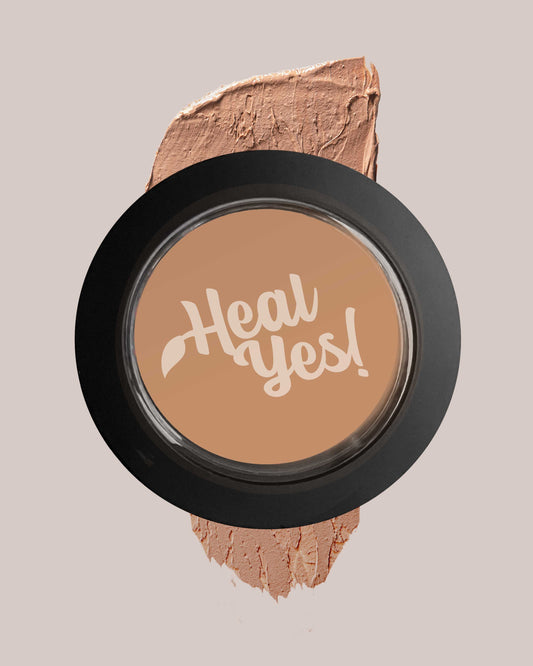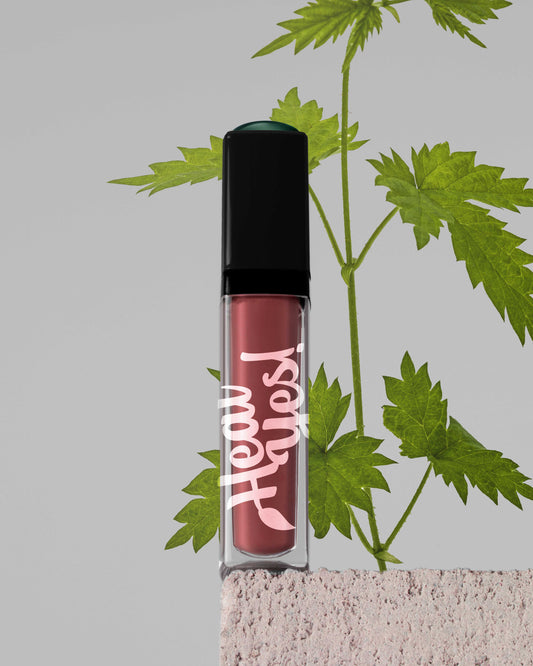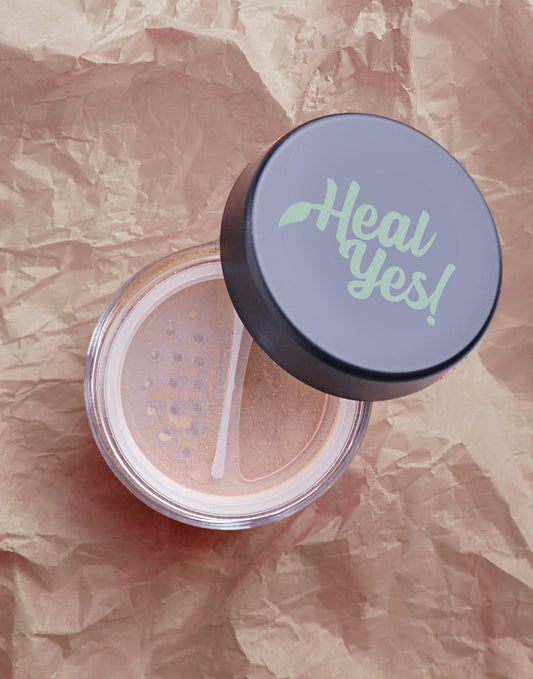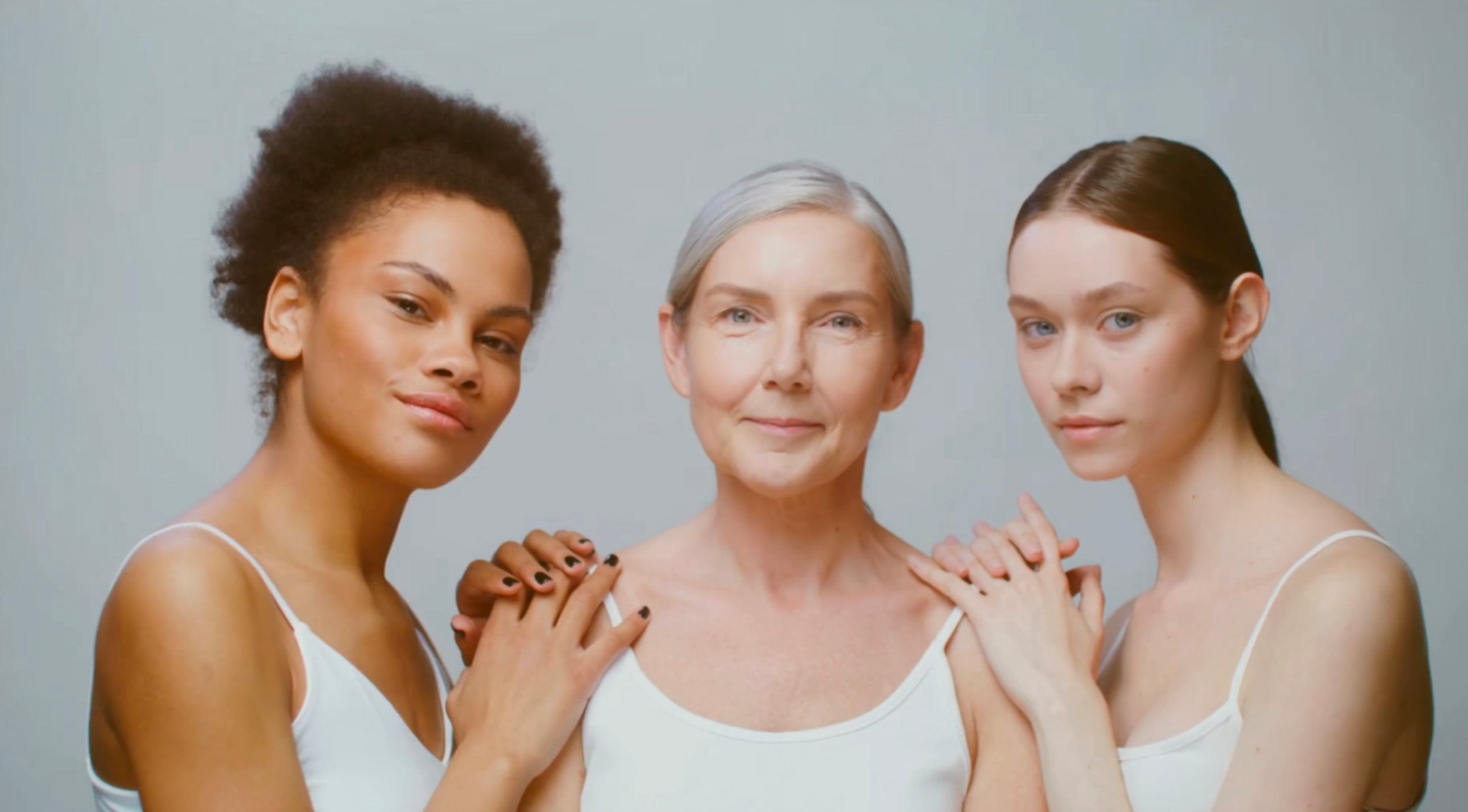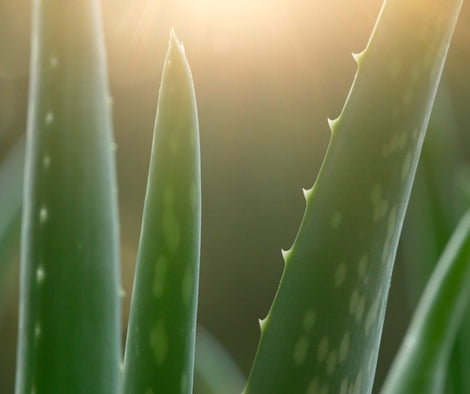In this article:
What is mica?
What is in cosmetic-grade mica?
Is mica safe in organic cosmetics?
Is mica toxic in cosmetics?
Synthetic mica option
Concerns with mica: in makeup
Is mica talc?
Final thoughts on mica
What is mica?
Mica is a mineral commonly used in cosmetics to add shimmer, light refraction, and softness. Interestingly, mica dust itself isn't exactly soft, as it has ragged edges; however, when finely ground into a powder for makeup, it feels lightweight and oh-so-soft on the skin and even delicate eyelids. But mica comes with some major 'cons,' and we'll address those, as well as the benefits.
As mentioned, within cosmetics, mica lends natural luster to create shimmering makeup products. Mica's cohesive properties and resistance to running also make it a valuable ingredient in concealer, foundation, and BB cream, benefiting cosmetics aside from merely lending shimmer; it helps everything stay in place, giving you that much-desired flawless finish.
Mica wouldn't be so popular within makeup formulations if it didn't contribute such desirable properties; in addition to the aforementioned, it helps add color, too, augmenting color-aiding ingredients such as iron oxides.
But there are concerns with mica, and the red flags have been waved more prominently over the recent years. Let's start with manufacturing issues:
It's imperative to handle mica with care and avoid inhaling it. Just like clays and other minerals and even agricultural products in dusty forms, mica dust can pose risks if inhaled. Those working with mica in the manufacturing process should take proper precautions and wear protective gear.
The mining side of mica is where major concerns arise.
According to the Bureau of International Labor Affairs, the majority of mica mining takes place in marginalized communities in Madagascar. . . .
Shockingly, thousands of children as young as four years old work in hazardous conditions to extract mica!
In no world is this acceptable!
What is cosmetic mica, specifically?
Cosmetic (i.e., cosmetic-grade) mica refers to 'mica'-categorized minerals sought after in the cosmetic industry to impart shimmer, shine, and color diversity to a range of beauty products. Mica itself is, by nature, a naturally occurring silicate mineral from the earth that's processed into fine powders for cosmetic use.
A cosmetic-grade ingredient in general refers to an ingredient chosen for skincare, haircare, cosmetics, heath-related products, etc., selected for its purported safety, efficacy, and compatibility with skin or hair. These ingredients undergo testing to ascertain they meet specific quality and regulatory standards for use in cosmetic products.
(But, alas, just because something is cosmetic-grade does not mean it will bode with your unique ingredient needs, especially if you have sensitive or otherwise reactive skin or allergen concerns. This is somewhat akin to how the terms "non-comedogenic" and "hypoallergenic" get used, though they do not require regulatory backing whereas "cosmetic-grade" does!)
The safety of cosmetic mica relies on its origin and processing methods, assuming the user is not sensitive to mica, that is. Again, some mica mines, particularly in India, have been tied to unethical labor, including child labor. (We'll iterate this concern more than once within this article!).
Is mica toxic? Is it safe in organic cosmetics?
Because mica is from the earth naturally (when not synthetic), it might sound as if it has a place in all cosmetics, especially natural- and organic-based formulas. Mica itself is not inherently considered toxic, but there are indeed considerations when using it in cosmetics, conventional and organic cosmetics alike:
Mica in Organic Cosmetics
Mica can be used in organic cosmetics, but there are challenges in ensuring its ethical and environmental sustainability, as well as its purity. Organic cosmetic brands that wish to use mica often face the task of sourcing it from responsible and ethically managed mines to address concerns related to labor practices and environmental impact. Conventional makeup brands with a penchant for cruelty-free and ethical sourcing may focus on responsible sourcing, too; it's not always limited to organic brands.
While mica itself is not toxic, the concerns lie more in the sourcing, processing, and potential contaminants associated with it. Brands that are committed to creating ethical and safe products should consider these factors when using mica in their formulations, and they may choose to work with suppliers that adhere to responsible mining practices and provide transparency about their sourcing.
All in all, mica is generally considered safe for use in cosmetics, including organic cosmetics, when sourced responsibly and used in appropriate concentrations. As with any cosmetic ingredient, make informed choices, scrutinizing data and claims, and prioritize ethical practices.
Synthetic mica option
Synthetic fluorophlogopite, or synthetic mica, mimics natural mica but is made in a lab. The synthetic form lends a glitter finish to cosmetics just as its natural, mined counterpart does. Not only does synthetic mica provide a guilt-free sparkle, but it also ensures that no child labor is involved in its production.
Synthetic mica is lab-created via magnesium aluminum silicate; to be more precise, according to an article in the International Journal of Toxicology, "synthetic fluorphlogopite (CAS No 12003-38-2) is a synthetic mimic of a mica-type, fluorine-substituted mineral composed of magnesium aluminum silicate sheets, weakly bound together with potassium."[2]
There doesn’t seem to be rife information on potential environmental impacts of producing synthetic mica, but, as iterated above, its laboratory roots should at least ascertain that it’s free from child labor.
However, some tend to steer clear of as many synthetic ingredients as possible, so when it comes to mica, this major catch-22 exists:
Mined mica risks child labor; synthetic mica is, well, a product produced in a lab, not mother nature. . . .
When it comes to making discernments about mica on ingredient decks, it can be listed in synthetic formats, too, which include “synthetic fluorophlogopite” if not simply “synthetic mica.”
So, mica in its natural form—mined mica—will be listed as either—
mica, potassium aluminium silicate, or ‘CI 77019’;
Whereas lab-created mica should be disclosed as—
synthetic mica or synthetic fluorphlogopite.
Concerns with mica: In makeup
The Environmental Working Group (EWG) assigns a low concern rating of two to mica in their safety guide, pointing to an overall favorable safety profile. . . .
However, certain areas of concern have been highlighted, and we'll iterate and reiterate them here:
Mica is identified as being bio-accumulative and persistent in both wildlife and humans, implying that mica particles have the potential to accumulate over time and remain in the environment for extended periods, which could lead to prolonged exposure.
Another issue centers around limited evidence suggesting the possibility of gastrointestinal or liver toxicity resulting from mica exposure. This is particularly relevant for products applied to the lips or skin that might be ingested or absorbed. (This can translate across many cosmetic product ingredients noted in the EWG.)
Additionally, due to mica's natural origin as a mined mineral, there is the possibility of it containing trace amounts of heavy metals such as lead, arsenic, and mercury; this is a similar concern with other mined ingredients. . . .
While regulatory bodies like the U.S. Food and Drug Administration (FDA) establish limits for these contaminants in mica, a potential risk still exists. The regulatory framework aims to maintain low levels of these contaminants to help ascertain the safety of consumers.
Selecting reputable suppliers that adhere to Good Manufacturing Practices (GMPs) becomes imperative in this context. Such companies maintain essential documentation including Material Safety Data Sheets (MSDS) and Certificates of Analysis (COAs) for each batch of mica, verifying the levels of potential contaminants. This meticulous approach ensures product consistency and safety.
While regulatory systems are not flawless, they do offer a degree of oversight. Adhering to regulations such as FDA guidelines establishes a baseline for acceptable contaminant levels in mica and other cosmetic ingredients, contributing to consumer safety.
Transparency regarding sourcing practices, testing procedures, and quality control measures is also germane. By sharing this information with consumers, cosmetic manufacturers can cultivate trust and confidence in the safety and ethical production of products that contain cosmetic-grade mica.
In a nutshell, mica is generally regarded as safe for cosmetic use, but the concerns related to its bio-accumulative nature, potential toxicity, and trace heavy metals emphasize the significance of responsible sourcing, rigorous testing, and adherence to safety guidelines. Both consumers and cosmetic manufacturers play a pivotal role in maintaining vigilance and staying informed to ensure the safety and ethical production of cosmetic products containing mica.
Is mica talc?
Is mica talc? Is talc mica? Are they one of the same? It's a common enough question and concern that we see it fit to address here:
Talc and mica are both cosmetic ingredients, both minerals, but not one of the same. Heal Yes! avoids talc, and many other companies—especially mineral-based and natural-oriented product companies—choose to eschew talc.
Historically, in cosmetics and personal care products, talc helps absorb excess oil and enhance a product's feel, helping make it smooth. Contrastingly, mica is used to impart a shine, glitter, sparkle, glow, dewy look and so forth, rather than a matte look.
Mica, as far as our knowledge and research extends, doesn't have such a litigation track record.
Talc is an ingredient we vehemently avoid. The Environmental Working Group says this of the mineral ingredient talc:
Talc can be contaminated with asbestos fibers, posing risks for respiratory toxicity and cancer. Studies by the National Toxicology Panel demonstrated that cosmetic-grade talc free of asbestos is a form of magnesium silicate that also can be toxic and carcinogenic.[3]
Final thoughts on pros and cons of mica in cosmetics
So, where should we stand on mica in makeup?
After all, it wouldn't be such a popular ingredient if it didn't bring some desirable qualities to the table (err, makeup counter). . . .
Mica adds that coveted shimmery look and helps achieve a dewy glow. It also enhances the color of other ingredients like iron oxides, taking your makeup game to the next level. And let's not forget about its adhesive properties—when combined with synergistic ingredients, mica helps your makeup adhere better, keeping it fresh and flawless throughout the day. . . .
But, alas, the concerns with child labor overseas are the stuff nightmares are made of. We at Heal Yes! will NEVER source from mines overseas where child labor exists. When our mica is from mined sourcing, it’s sourced ETHICALLY. When we use a lab-produced counterpart, we label it accordingly.
Fortunately, in a world that's becoming increasingly mindful of ethical and sustainable practices, we're seeing the rise of ethical beauty brands that source mica responsibly or use synthetic and environmentally friendly alternatives. Even so, we need to continue pushing companies to embrace ethical and synthetic mica, ensuring that the beauty industry sparkles with fairness and compassion!
If you’re set on mica-free, consider this collection. If finding solace in our ethical sourcing of mica, here is our full range.


